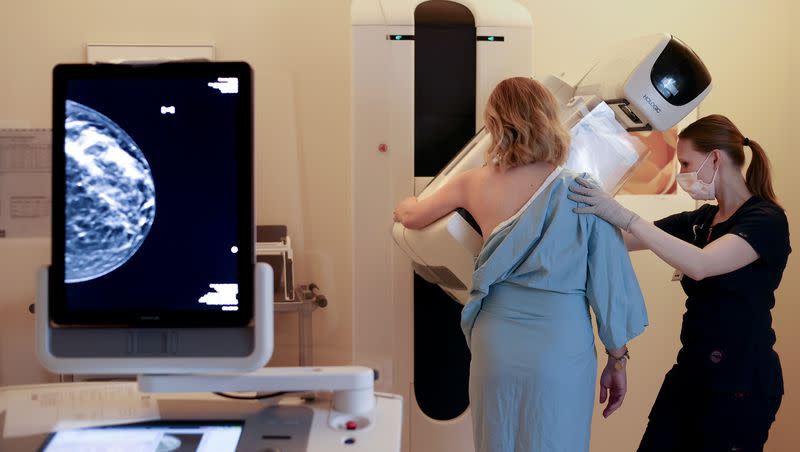Breast Cancer Awareness Month 2023: Understanding breast cancer and its impact

October is Breast Cancer Awareness Month, and Utahn Julie Castle told Fox 13 that her advice to people this October is to listen to your body.
“Cancer is an opportunist,” Castle said. “It will take advantage of your body being weakened. If you don’t go and get checked right away, you can go from being treatable to not being treatable and terminal.”
For the 31 days of October, awareness can look different for many people. While some don pink in observance, others may silently reflect, experience sorrow or give recognition.
According to the Centers for Disease Control and Prevention, 240,000 women in the United States are diagnosed with breast cancer each year; 2,100 men are diagnosed yearly, too.
Related
Dense breast tissue is no reason to panic, but it may warrant additional screening
Health news: Breast cancer, stair climbing and relieving long COVID
Adding that, “About 42,000 women and 500 men in the U.S. die each year from breast cancer. Black women have a higher rate of death from breast cancer than all other women.”
Besides skin cancer, breast cancer is the most diagnosed cancer in females in the U.S., according to the American Cancer Society. Some women are more at risk due to certain factors. However, every woman should know what signs and symptoms to look for as a health precaution.
Symptoms of breast cancer
Like many cancers, breast cancer can be hard to notice during the early stages of the disease and has little-to-no symptoms initially.
While lump growth is the most common symptom of breast cancer, it isn’t always cancerous — and it isn’t the only symptom. According to the Cancer Center, there are some outward warning signs of breast cancer to look out for:
Breast swelling.
Discharge or blood coming out of the nipple.
Dimpling of the breast skin.
The nipple turns inwards.
Lump under the arm or collarbone.
Skin changes on the breast or nipple.
“Having some of these symptoms or breast changes doesn’t necessarily mean you have breast cancer. Many other factors go into a diagnosis, not just outward signs,” the Cancer Center said.
Related
When to get examined
The National Breast Cancer Foundation advises to get screenings even if symptoms are not noticeable. “Most breast cancers are diagnosed before symptoms start, such as during your regular screening mammogram. The goal of screening is to find cancer when it is very small, before symptoms start.”
Starting for women age 40, the Susan G. Komen Breast Cancer Organization recommends mammogram visits once a year and every two years for women ages 50-74, but to visit with your health care provider to ensure personal needs are met.
“A health care professional can review your health history and your family’s health history to understand your risk,” the Mayo Clinic said. “If you have risk factors, your health care team might suggest other breast cancer screening tests. Sometimes people with a higher risk of breast cancer have screening tests more often.”
Can you reduce the risk?
There are multiple factors that can influence breast cancer. Like any illness, maintaining a healthy lifestyle can reduce the risk of disease.
“You can’t change some factors, such as getting older or your family history, but you can help lower your risk of breast cancer by taking care of your health. ... Staying healthy throughout your life will lower your risk of developing cancer, and improve your chances of surviving cancer if it occurs,” per the CDC.

